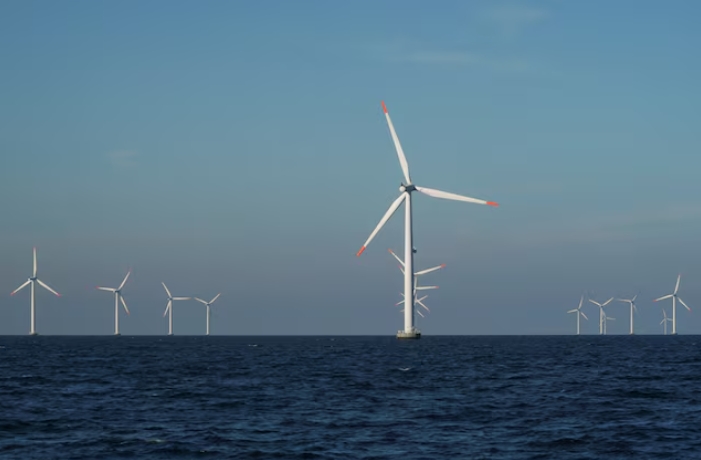
The Labour government's plans to decarbonise the electricity sector by 2030 require a big increase in renewable power capacity such as wind and solar.
Energy Secretary Ed Miliband issued a statement saying the Labour administration, in power since July, had "inherited a broken energy policy" and the auction on Tuesday, which awarded a record number of projects, marked progress it would build on.
The auction supported a total of 131 wind, solar and tidal projects capable of generating almost 10 gigawatts (GW) of capacity, which would be enough to power around 11 million homes, Miliband said.
The auction's budget was the biggest yet at 1.5 billion pounds ($1.97 billion), which the government increased from 1 billion pounds after calls from industry.
Previous auctions have secured more capacity, hitting a peak of 11 GW in 2022, however, and analysts said Tuesday's result was not enough to meet the country's target of expanding offshore wind capacity to 60 GW by 2030 from around 15 GW now.
"With next year’s (seventh auction) being the last chance to procure capacity for delivery before 2030, an additional 31 GW of offshore wind capacity is needed to meet the target," Pranav Menon, a research associate at Aurora Energy Research, said.
Orsted's giant offshore wind project Hornsea 4 secured the largest contract by capacity at 2.4 GW.
Iberdrola also won contracts for its East Anglia Two and East Anglia Three offshore wind projects.
RWE UK (RWEG.DE), opens new tab Country Chair Tom Glover told Reuters it was positive to see offshore wind projects in the auction, but he was disappointed two thirds of "the eligible pipeline" had been omitted when the government has said it wants to accelerate the sector.
RWE is developing the Norfolk Vanguard West and East offshore wind projects it bought from Vattenfall last year that have a combined capacity of 2.8 GW.
The company did not confirm whether it had entered them into the latest auction.
RWE won contracts for a total of 218 megawatts of capacity across five onshore wind and solar projects.
Through the auctions, held annually, the government invites renewable project developers to bid for government-backed price guarantees for the electricity produced, called Contracts for Difference (CfDs).
When wholesale electricity prices are lower than the minimum, the government covers the difference, if they go above, producers pay back the difference to the government.
The fifth auction held in 2023 failed to attract any offshore wind projects as developers deemed the incentives offered too low.
In Tuesday's sixth auction result, the electricity price contracts for offshore wind were 54.20 pounds to 58.90 pounds per megawatt hour (MWh) in 2012 prices, government data showed.
This was significantly higher than the 44 pounds per MWh offered in for offshore wind in last years auction.
Analysts at Jefferies estimated the price awarded on Tuesday would be worth between 82.60 and 89.70 pounds/MWh in 2027 prices - when the first projects would be expected online - when including inflation.
Spot electricity prices in Britain are volatile but the day-ahead contract currently trades around 92 pounds/MWh.